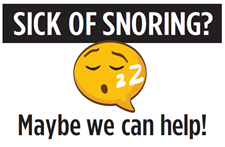These are made of medical grade silicone. There are three sizes in these packs. Place (not force) these into the nostrils and try them.
You can clear your nose using a head-jolt where you nod-down sharply. That is three or four times ‘head-butt’ an imaginary item so your head comes down and forwards. Then gently blow your nose.
Nasal sprays. To date the best include wood-sugar. While this seems odd many times the bacteria that irritate the nose come from the mouth and these love sugar. But while they can eat sugar they can’t digest it and simply swell up and burst. There are many sprays so you may have to try a variety and a lot of non-commercial home-based sprays.
Why the nose cones? There are little valves (anterior nasal valves) inside the nostril that if the nose and top jaw are too narrow can’t open. This will force mouth-breathing. Mouth breathing is not a good substitute as it’s bigger and carries off up to six times more carbon dioxide and this alters the amount of acid in your blood. Dr. Costen in 1934 knew of this and tested people by gently flaring the nostrils – you can check also by placing a fingertip beside the nose and moving these outwards about the thickness of a match-stick (1-2mm). Then compare this to your normal breathing.
Nose cones, Breathe-Rite strips and nasal sprays of all types will help some people, not all, so where possible try things first.
Nose cones help, often dramatically and that’s always welcome but it’s making up for a smaller than ideal mid-section of the face, a process that started when your foetus first implanted in the womb.
Good research shows that during the 1800’s as sugar and tobacco reduced in cost, more was consumed and about 2 or 3 generations later most of the commonly associated health issues of sleep apnoea appeared more frequently. It wasn’t until the end of the 1900’s that the mechanics became clear and then researchers found that ‘dipping’ that is drop/rise of oxygen during sleep was responsible for generation of high levels of inflammatory chemicals. In fact Gozal’s team showed that not only were the chemicals seen usually after a heart attack, but Dr. David Gozal’s team found these chemicals in the exhaled breath of three year olds who SNORE. They also noted there were chemicals that showed artery damage. These are the hallmarks of cardiovascular damage. Early last year this same group showed that snoring juveniles showed a similar pattern of brain breakdown that was normally only seen in Alzheimer’s.
david@tfdental.co.nz The Snoring Centre.
[proceeds of sales go towards ongoing sleep and chronic pain research]

